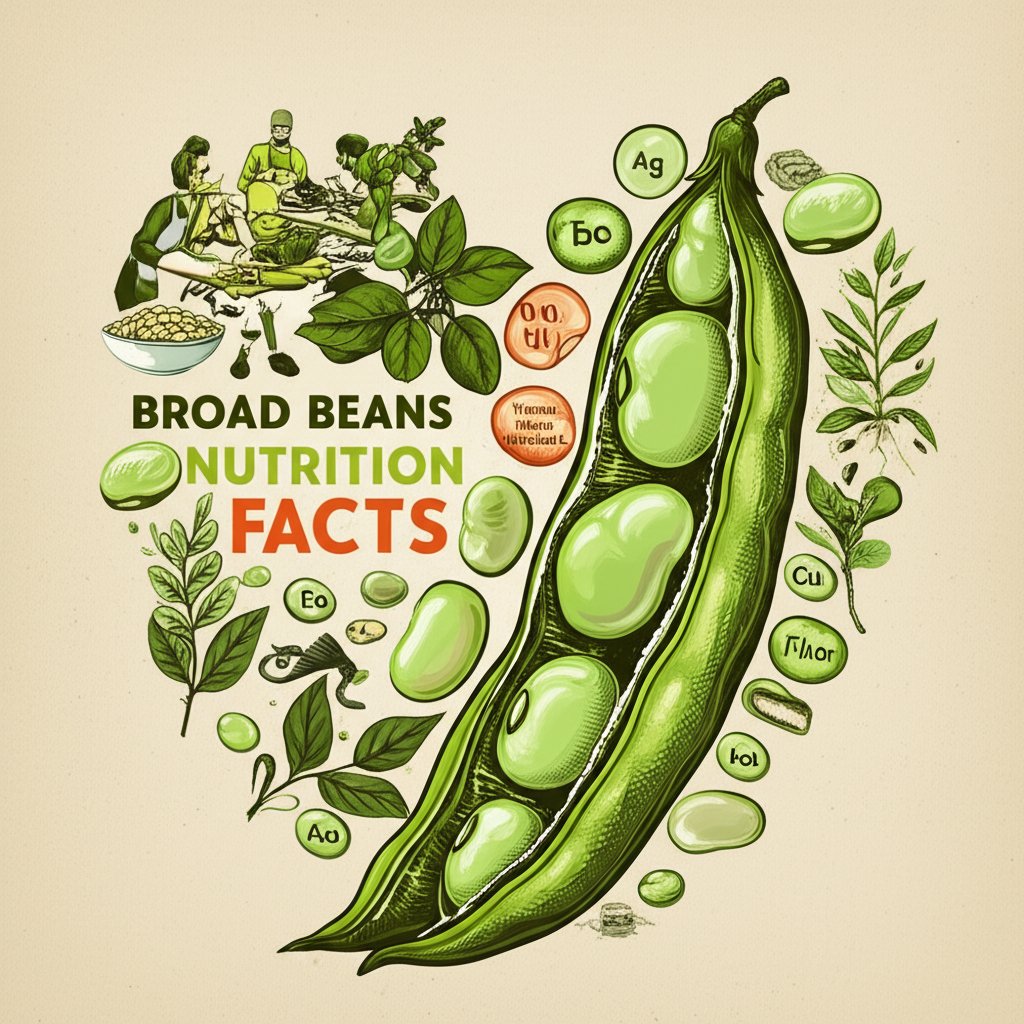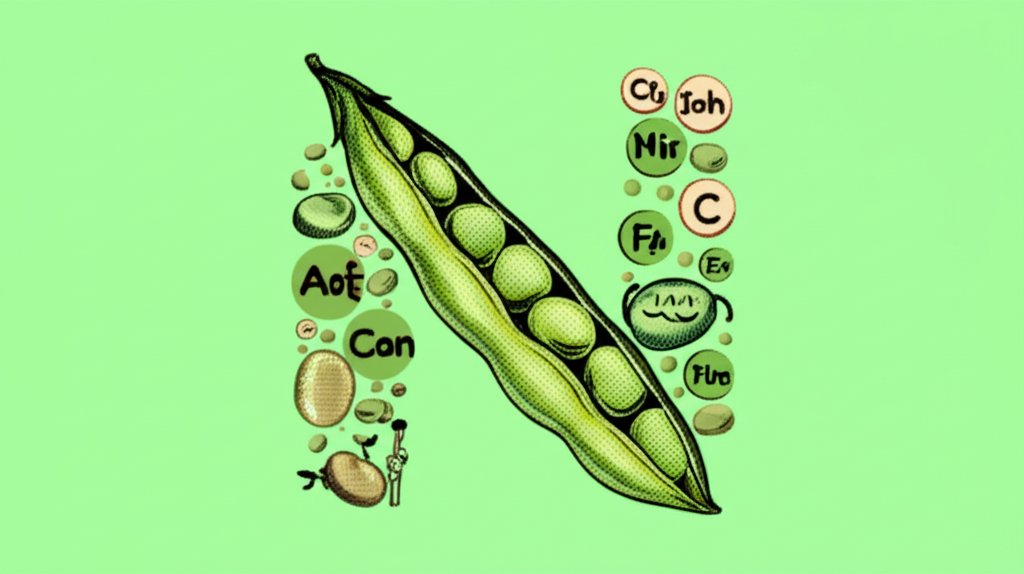Are you looking for ways to boost the nutritional value of your meals? While you’re considering protein sources like pork chops, don’t overlook the incredible benefits offered by pairing them with nutrient-rich sides. Understanding broad beans nutrition facts can unlock a world of flavor and health benefits, making it a worthwhile addition to your diet. They’re packed with protein and fiber, complementing the protein from your main course.
At a glance:
- Discover why broad beans are a nutritional powerhouse.
- Learn how broad beans complement the health benefits of lean protein sources.
- Get practical tips for incorporating broad beans into your meals.
- Address common questions and misconceptions about broad bean nutrition.
- Find a quick, actionable guide to start enjoying broad beans today.
Broad Beans: A Nutritional Deep Dive
Broad beans, also known as fava beans, are more than just a tasty vegetable; they’re a nutritional powerhouse. They stand out due to their high protein and fiber content, setting them apart from many other vegetables.
- Protein Powerhouse: One cup of cooked broad beans can provide around 13 grams of protein, contributing significantly to your daily protein needs.
- Fiber-Rich: The same serving packs about 9 grams of fiber. This aids digestion, keeps you feeling full, and helps regulate blood sugar levels.
- Vitamin and Mineral Boost: Broad beans are rich in essential vitamins and minerals, including folate, manganese, copper, and iron. These contribute to overall health, supporting everything from cell growth to energy production.
For instance, folate plays a key role in cell growth and development, making broad beans particularly beneficial for pregnant women. Manganese and copper act as antioxidants, protecting your cells from damage. The iron content helps prevent anemia by supporting red blood cell production.
How Broad Beans Complement Boneless Pork Chop Nutrition
While considering the nutritional advantages of boneless pork chops, such as their high protein content and essential vitamins, it’s helpful to see how they pair with vegetables like broad beans. You can find more about that in this guide to Healthy Pork Chop Nutrition. Combining protein-rich pork chops with broad beans ensures you are getting a well-rounded meal. Lean pork chops are a great source of protein, and a 3-ounce serving provides about 23 grams of protein.
- Complete Protein Intake: Combining the protein from pork chops (around 26 grams per 3-ounce serving) with the protein from broad beans ensures a more complete amino acid profile.
- Fiber and Digestive Health: Broad beans provide fiber that pork chops lack. This promotes digestive health and prevents constipation.
- Balanced Micronutrient Profile: Pork chops are rich in B vitamins and selenium, while broad beans contribute folate, manganese, and iron. This pairing offers a more diverse range of essential nutrients.
Maximizing the Nutritional Synergy
To truly leverage the nutritional synergy between broad beans and pork chops, preparation methods matter. Frying pork chops, for example, significantly increases their calorie and fat content. Similarly, overcooking broad beans can diminish their vitamin content.
For a healthier approach:
- Grill or Bake Pork Chops: Opt for grilling or baking to minimize added fats. Marinate the pork chops in apple juice and mustard for a tangy twist and tenderizing effect.
- Steam or Lightly Boil Broad Beans: This preserves their nutrients and natural flavor. Avoid overcooking to maintain their texture and vitamin content.
- Flavor Wisely: Use herbs, spices, and citrus to enhance flavor instead of relying on heavy sauces or excessive salt.
Consider a meal featuring grilled pork chops seasoned with rosemary and garlic, accompanied by steamed broad beans tossed with olive oil, lemon juice, and a sprinkle of fresh mint. This combination provides a balanced and flavorful way to enjoy the benefits of both ingredients.
Practical Tips for Incorporating Broad Beans
Incorporating broad beans into your diet is easier than you might think. They can be used in a variety of dishes, from simple side dishes to more complex recipes.
- Salads: Add cooked and cooled broad beans to salads for a protein and fiber boost. They pair well with feta cheese, tomatoes, and a lemon vinaigrette.
- Soups and Stews: Include broad beans in soups and stews for added texture and nutritional value. They work particularly well in vegetable-based broths.
- Purees and Dips: Puree cooked broad beans with olive oil, garlic, and lemon juice to create a delicious and healthy dip. Serve with whole-grain crackers or vegetables.
- Side Dishes: Sauté broad beans with garlic and olive oil for a simple and flavorful side dish. Add a sprinkle of Parmesan cheese for extra flavor.
Step-by-step guide to preparing broad beans:
- Shell the Beans: Remove the beans from their pods.
- Blanch the Beans (Optional): Blanch the beans in boiling water for 1-2 minutes, then transfer them to an ice bath. This makes it easier to remove the outer skin, which can be tough.
- Cook the Beans: Steam, boil, or sauté the beans until tender. Cooking time will vary depending on the method and size of the beans.
- Season and Serve: Season the cooked beans with your favorite herbs, spices, and seasonings.
Quick Answers: Common Broad Bean Questions
Here are some answers to frequently asked questions:
Q: Are broad beans high in calories?
A: No, broad beans are relatively low in calories. A cup of cooked broad beans contains around 187 calories.
Q: Can broad beans cause any side effects?
A: Some individuals with a genetic condition called G6PD deficiency may experience a reaction (favism) after consuming broad beans. This is relatively rare, but anyone with this condition should avoid broad beans.
Q: Are broad beans suitable for people with diabetes?
A: Yes, broad beans are a good choice for people with diabetes due to their high fiber content, which helps regulate blood sugar levels.
Q: How should I store broad beans?
A: Fresh broad beans should be stored in the refrigerator and used within a few days. Dried broad beans can be stored in a cool, dry place for several months.
Q: Can I eat broad bean pods?
A: Young, tender broad bean pods can be eaten raw or cooked. However, older pods are generally too tough to eat.
Actionable Close: Start Enjoying Broad Beans Today
Ready to unlock the benefits of broad beans? Here’s a quick start guide:
- Purchase: Buy fresh or frozen broad beans from your local grocery store or farmer’s market.
- Prepare: Shell the beans and blanch them (optional) to remove the outer skin.
- Cook: Steam, boil, or sauté the beans until tender.
- Pair: Serve the broad beans as a side dish with grilled or baked pork chops for a balanced and nutritious meal.
- Experiment: Try adding broad beans to salads, soups, or dips to discover your favorite ways to enjoy them.
By understanding broad beans nutrition facts and incorporating them into your meals alongside protein sources like pork chops, you can create a balanced and nutritious diet that supports your overall health and well-being. Remember, variety is key, so explore different ways to enjoy broad beans and make them a regular part of your healthy eating plan.

- The Best Bento Box Price For Your Perfect Packed Lunch - December 15, 2025
- Bento Box Shopping Tips for Smart and Stylish Lunch Prep - December 14, 2025
- Bento Box Trays Streamline Restaurant Meal Presentation and Transport - December 13, 2025










